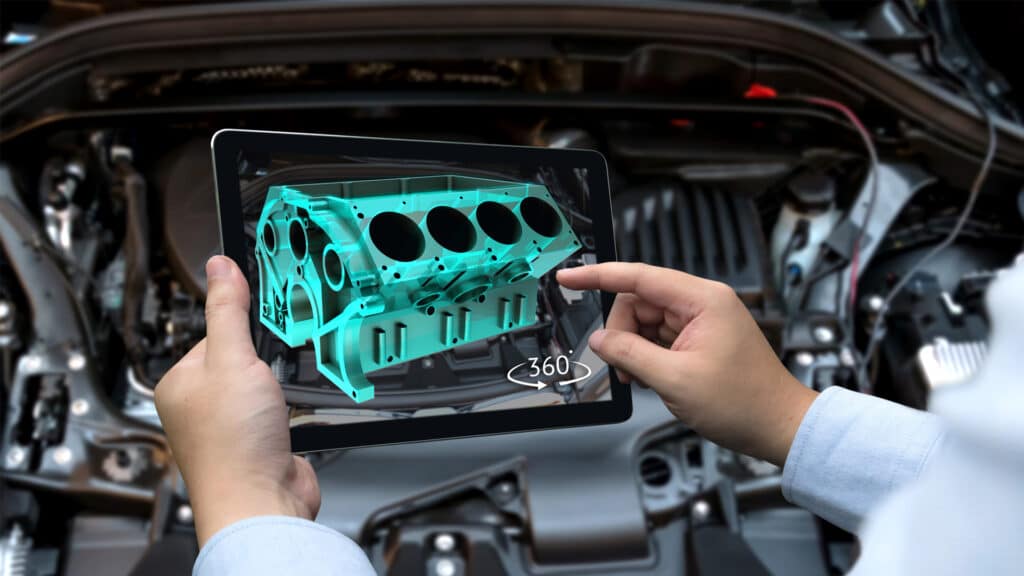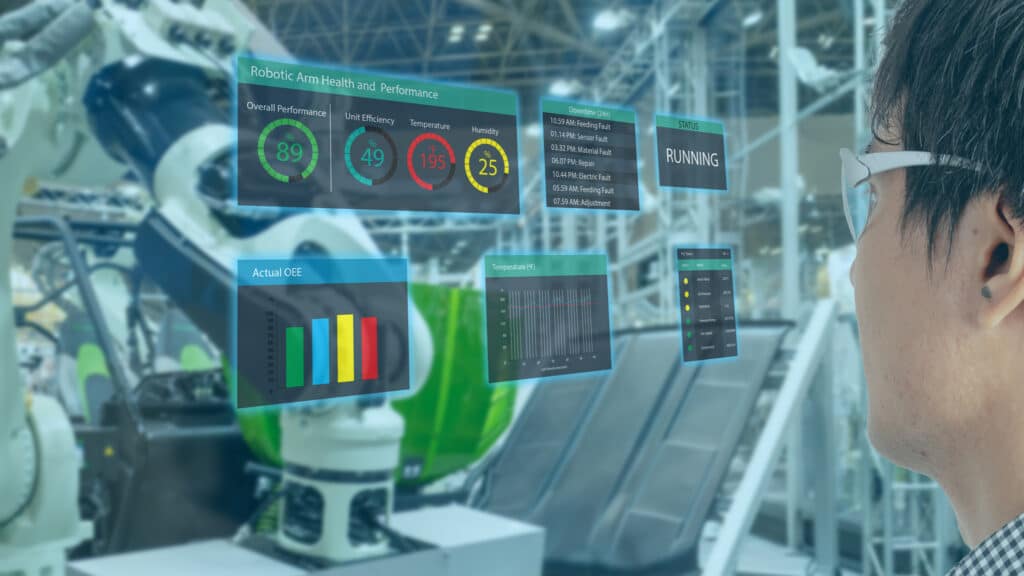The Fourth Industrial Revolution (4IR) has steered in a fresh era of digital transformation and automation. The convergence of physical, digital, and biological systems has given rise to the Internet of Things (IoT), which connects devices and machines to the Internet, enabling real-time data collection and analysis. This has created a wealth of opportunities for enterprises to optimize their processes, reduce costs, and enhance productivity. And at the forefront of this revolution is augmented reality (AR).
Contents
AR & Its Applications
AR is a technology that overlays virtual information onto the real world, improving the user’s definition of reality. It has become an essential tool in various industries, including manufacturing, logistics, and maintenance, enabling workers to perform tasks more efficiently and effectively. In manufacturing, AR is being used to improve product design and prototyping. Engineers can create virtual 3D models of products and test their functionality in a simulated environment. This saves time and money compared to traditional methods, which involve building physical prototypes. AR also enables workers to visualize complex assembly processes and instructions, reducing the risk of errors and improving quality control.
Logistics is another industry that is benefiting from AR. It can help optimize supply chain management by providing real-time data on inventory levels, shipment tracking, and delivery status. Workers can use AR-enabled devices to scan barcodes and access product information, reducing the need for manual data entry and improving accuracy. AR is also transforming maintenance operations. Technicians can use AR-enabled devices to visualize the inner workings of machines and identify potential issues before they become critical. This improves preventive maintenance and reduces downtime, leading to significant cost savings.
The Future Possibilities
The integration of AR with IoT is opening up new possibilities for businesses to optimize their operations even further. By combining AR with sensors and IoT devices, businesses can collect real-time data on machine performance and environmental factors. This data can be used to identify patterns and predict maintenance needs, enabling proactive maintenance and reducing the risk of unplanned downtime. For example, a manufacturer can use IoT sensors to collect machine vibrations and temperature data. This data can be analyzed in real-time using AR-enabled devices, allowing technicians to identify potential issues and take remedial action before they push downtime. The benefits of condition monitoring through such AR and IoT integration include improved operational efficiency, cost savings, and increased equipment lifespan.
Another example is in the logistics industry, where IoT sensors can be employed to observe the condition of goods during transport. AR can then be used to visualize this data in real-time, enabling workers to take immediate action if any issues are detected.
The benefits of AR and IoT integration go beyond operational efficiency. It can also improve safety in the workplace by providing workers with real-time information on hazards and safety procedures. AR can also enhance training and education by creating immersive learning experiences that simulate real-world scenarios.
The Takeaway
In conclusion, the integration of AR with IoT is revolutionizing various industries, enabling businesses to optimize their operations, reduce costs, and improve productivity. AR provides workers with real-time information and enhances their perception of reality, making them more effective and efficient. The combination of AR and IoT is a powerful tool that will continue to shape the Fourth Industrial Revolution and the future of work.



